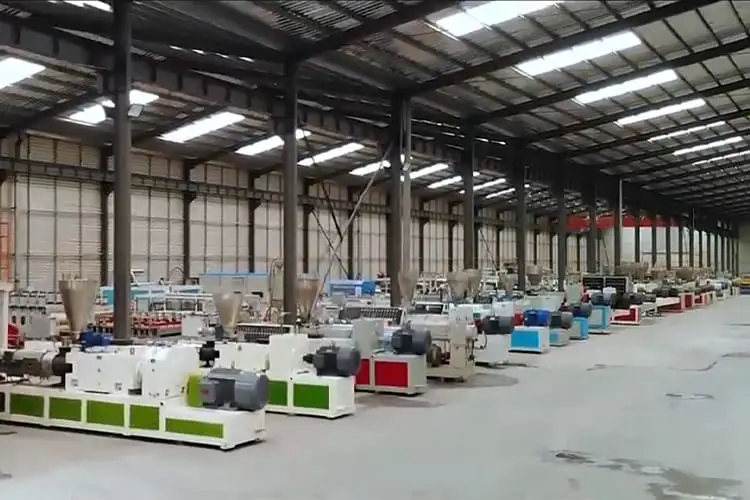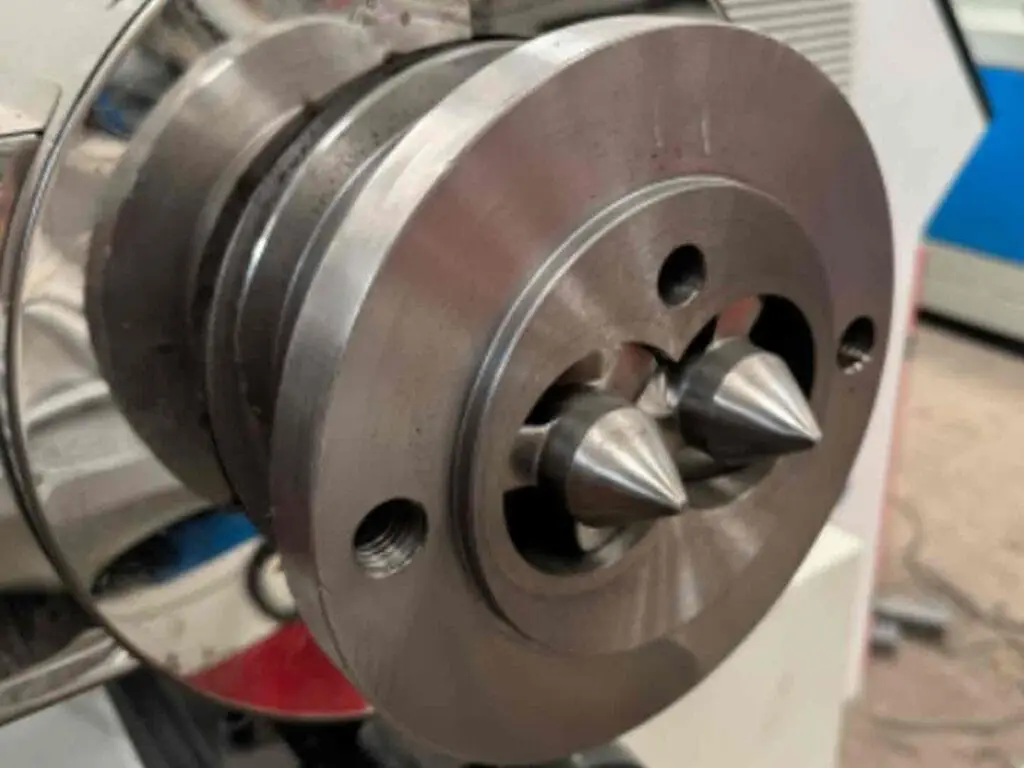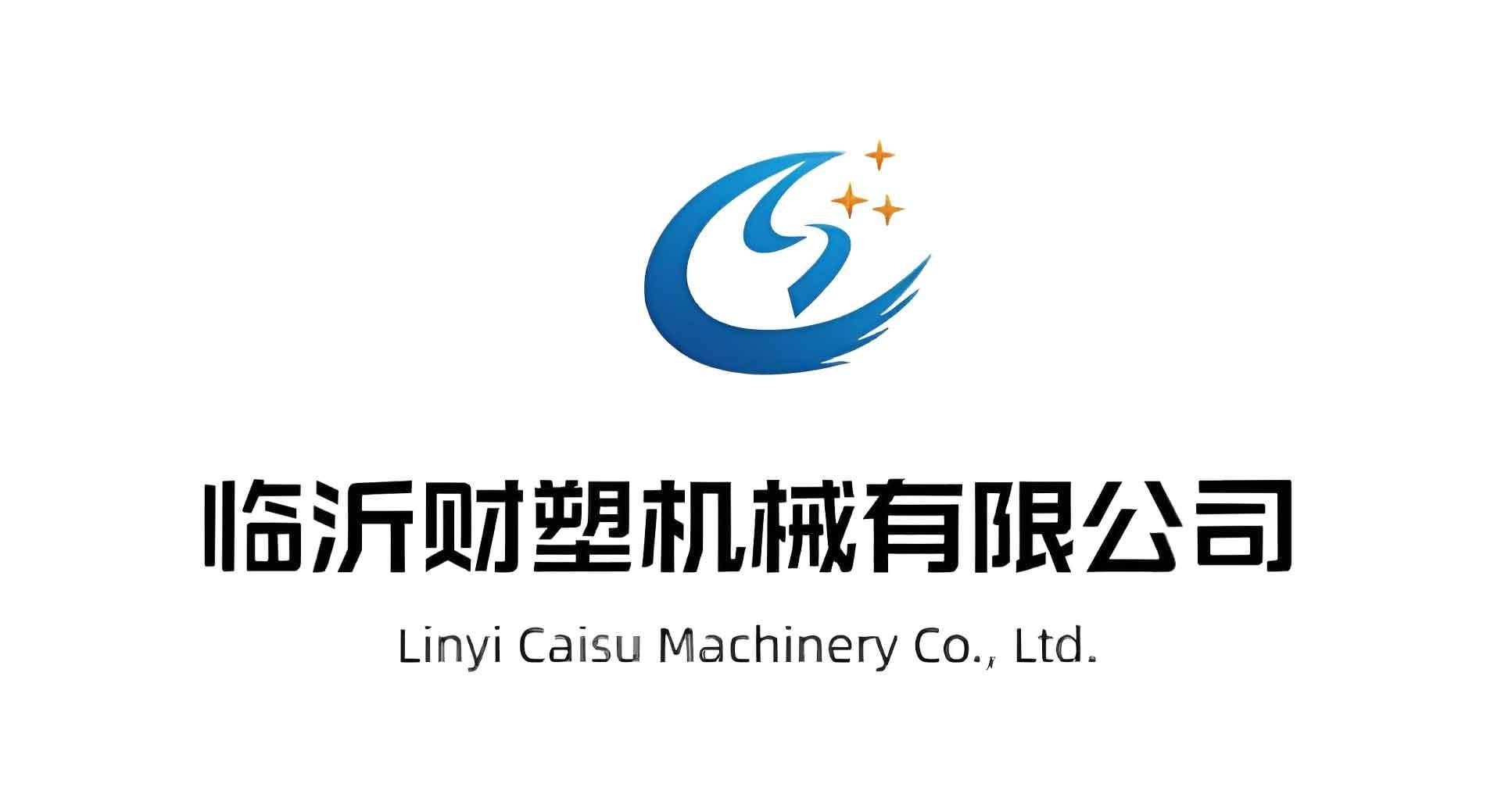Welcome to My Blog!
Before we dive into the content, I’d love for you to join me on my social media platforms where I share more insights, engage with the community, and post updates. Here’s how you can connect with me:
Facebook:https://www.facebook.com/profile.php?id=61567891941530
Now, let’s get started on our journey together. I hope you find the content here insightful, engaging, and valuable.
Caisu Machinery sells a variety of used plastic pipe production equipment. The products are of high quality and low price. Welcome to contact us for consultation and purchase. We will be happy to serve you.
Table of Contents
Introduction

If you’ve ever thought, “What are single and twin screw extruders?”, you’re in the right place. Whether you’re involved in plastic processing, recycling, compounding, or extrusion molding, having a clear understanding of single and twin screw extruders can help you choose the right equipment and optimize your production line.
In simple terms, these machines melt and shape plastic materials into pellets, sheets, films, or profiles. Single screw extruders are common for standard melting and extrusion, while twin screw extruders deliver advanced mixing, devolatilization, and precision control over the process.
How Single Screw Extruders Work
A single screw extruder includes a rotating screw that pushes plastic resin through a heated barrel. As it advances, the material melts, mixes, and is forced through a die at the end of the barrel. The main components are:
- Hopper to feed plastic granules
- Barrel divided into temperature-controlled zones
- Screw with feed, compression, and metering sections
- Die head that shapes the molten material
- Cooling conveyor or water bath and cutter
Single screw extruders are ideal for mono-layer film, basic tubing, and standard pipe production. You control output and melt quality by adjusting temperature zones and screw speed.

How Twin Screw Extruders Work
Twin screw extruders contain two intermeshing screws in a single barrel. They can co-rotate or counter-rotate and are engineered to provide high shear, intensive mixing, and precise residence time.
Key features include:
- Modular screw elements for customizable mixing
- Excellent dispersion of additives, fillers, and colorants
- Venting and degassing sections to remove moisture, solvents, or volatiles
- Precise throughput for consistent compound quality
These advantages make twin screw extruders ideal for compounding, recycling, and specialized profile production.
Side-by-Side Comparison of Single and Twin Screw Extruders
Here’s a comparison of the two machines based on performance and application:
| Feature / Requirement | Single screw extruder | Twin screw extruder |
|---|---|---|
| Mixing and dispersion | Moderate | Excellent |
| Degassing and venting | Limited | Excellent |
| Throughput consistency | Good | Excellent |
| Screw design flexibility | No | Yes |
| Common applications | Pipe, simple film, tubing | Compounding, recycling, masterbatch |
| Initial investment | Lower | Higher |
| Maintenance complexity | Simpler | More complex |
| Typical industries | Packaging, pipes | Recycling, compounding, masterbatch |
Choosing between the two machines depends on your application. For basic extrusion, single screw units offer reliability at a lower cost. If you need high mixing performance and compound consistency, twin screw extruders are the better choice.
Use Cases and Industry Applications
Here are common scenarios where single and twin screw extruders are used:
- Recycling and pelletizing: twin screw extruders are known for devolatilization and melt filtration
- Blow film and packaging: single screw lines handle mono- and bi-layer film production efficiently
- Compounding with additives: twin screws handle colorants, flame retardants, and functional fillers
- Profile extrusion: large and complex profiles benefit from twin screw mixing and customization
- Wire and cable insulation: consistent compound quality achieved with twin screw machines
Choosing Between Single and Twin Screw Extruders
When deciding on equipment, consider:
Production volume and scalability
Type of materials and formulations
Operational flexibility and future requirements
Budget and long-term cost of ownership
Floor space and maintenance capabilities
Single screw extruders are simpler and cost-effective, while twin screw extruders offer advanced flexibility and control for specialized applications.
Common Screw Configurations and Their Performance
Here’s a table showing popular screw element types and their intended applications:
| Screw Type | Mixing Capability | Pressure-Building | Ideal Application |
|---|---|---|---|
| Barrier/Partition | Moderate | High | Film, pipe, pelletizing |
| Kneading Block | High | Medium | Colorant blending |
| Mixing Element | High | Medium | Compounding |
| Distributive Lobe | Moderate | Low | Gentle blending |
| Devolatilizing Section | High | Low | Recycling and solvent removal |
Selecting the right screw configuration optimizes melt quality, output, and process stability.
Troubleshooting Extrusion Issues
Here are common challenges and practical solutions:
Overheating or degraded melt
– reduce barrel temperature or screw speed; monitor with thermal profiling
Color streaks or poor mixing
– improve screw design, add kneading sections, or adjust feed rate
High melt pressure
– worn screws or blocked vent ports; clean or replace components
Inconsistent output
– uneven feed, hopper material bridging, or moisture in raw materials
Excessive torque
– check for overload: wrong material viscosity or screw geometry may be to blame
Regularly monitoring torque, temperature, and throughput will help you diagnose and solve issues early.
Maintenance and Best Practices
To keep your extruder running smoothly:
Check barrel and screw wear regularly
Maintain tight clearances—screws should be replaced when worn
Clean barrels periodically using appropriate cleaners
Lubricate gearbox and bearings to prevent breakdowns
Keep twin screw venting systems in peak condition
Train technicians on proper setup and change-out procedures

Environmental and Sustainability Benefits
Extruders contribute to sustainability in several ways:
Recycling post-industrial and post-consumer plastics with twin screw systems
Energy savings from modern servo-driven extruders and insulated barrels
Using additive-filled compounds for reduced virgin plastic content
According to the 2024 Plastics Sustainability Index, extrusion recycling using twin screw extruders reduces carbon footprint by 30–40% compared to incineration or landfill disposal.
Conclusion
To summarize, single and twin screw extruders each come with unique strengths:
Single screw extruders are cost-effective and simple for steady, single-material processes
Twin screw extruders offer high precision, mixing control, and flexibility for advanced processes
Your selection should address:
– Product quality requirements (mixing, devolatilization, compound uniformity)
– Production levels and future growth plans
– Facility capabilities (maintenance, space, power)
– Total cost of ownership over time
Considering these factors will help you choose the right extruder for long-term success.
FAQ
What are the key differences between single and twin screw extruders?
Single screw extruders work well for simple melting and extrusion, while twin screw machines excel at mixing, devolatilization, and compound consistency.
Can a single screw extruder be converted into a twin screw machine?
Not directly; they are built differently. Some facilities use smaller twin screw machines to complement single-screw lines when compounding flexibility is needed.
How long do extrusion screws last?
Materials and usage affect lifespan. In general, screws handle 3–5 years of service. Abrasive or filler-heavy compounds may reduce that life.
Can twin screw extruders process highly pigmented or filled materials?
Yes, their intensive mixing zones and screw flexibility allow them to handle heavily filled materials like masterbatches and concentrated colorants.
Are single and twin screw extruders suitable for food-grade applications?
Absolutely. With proper cleaning, certification, and screw design, both types meet regulatory standards for food packaging and medical tubing.





